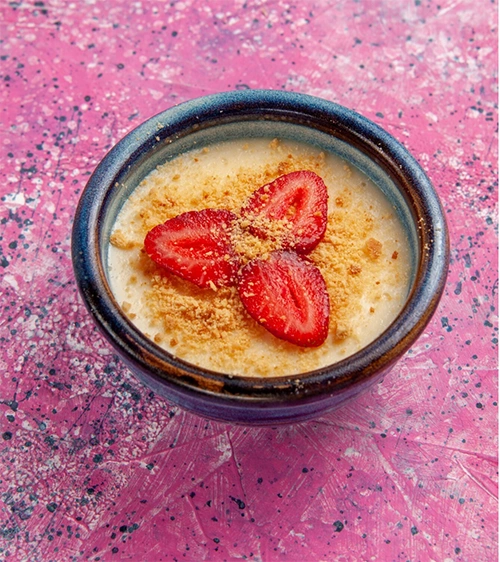

Top Health Benefits of Rice Pudding (Sütlaç) You Need to Know
Sütlaç is a traditional Turkish dessert that offers a comforting and nourishing experience with its simple ingredients. Primarily made with milk, rice, and sugar, this dish provides a good source of calcium, protein, and energy. The milk used in sütlaç contributes significantly to daily calcium intake, which is vital for bone health and muscle function. Additionally, it offers high-quality animal protein that helps support tissue repair and growth. The carbohydrates from rice and sugar provide a quick source of energy, making it an excellent option for those needing a post-meal dessert or a light snack. When topped with cinnamon or pistachios, it also brings in antioxidants and healthy fats. While it may not be low in calories, it is a more wholesome choice compared to processed desserts, as it contains no artificial additives or preservatives. With a creamy texture and subtle sweetness, sütlaç is both satisfying and nourishing in moderation.
Recipe :
For 4 people
Enjoy your creamy and comforting Turkish rice pudding (Sütlaç)! 😊
When preparing sütlaç, attention to detail is essential to achieving the perfect creamy texture and balanced flavor. First and foremost, the rice must be fully cooked before adding the milk to ensure it softens properly and blends seamlessly into the mixture. Using full-fat milk enhances the richness of the dessert, but make sure to stir frequently to prevent the milk from scalding or sticking to the bottom of the pot. Dissolving the cornstarch in cold water separately before adding it to the hot mixture helps prevent lumps and ensures smooth thickening. It's also important not to rush the cooking process; letting it simmer slowly allows the flavors to meld and the texture to develop fully. After cooking, the pudding should be poured into individual bowls while still warm, as it will thicken more as it cools. Toppings like cinnamon or ground pistachios should be added just before serving to maintain freshness and visual appeal. Chilling the sütlaç for a few hours in the refrigerator enhances its flavor and creates a delightful contrast between its cool temperature and warm spices.

Sütlaç is naturally suitable for vegetarian and gluten-free diets, provided all ingredients are confirmed to be gluten-free (especially cornstarch and flavorings). However, due to its sugar and carbohydrate content, it may not be ideal for those following ketogenic, paleo, or low-carb diets. People on low-calorie or diabetic diets should consume sütlaç in moderation or consider sugar-free alternatives using natural sweeteners. It is not vegan unless plant-based milk and non-dairy thickening agents are used, which can affect both flavor and texture. High-protein diets may find this dish lacking in protein unless additional sources, like protein-rich toppings or fortified milk, are included. Those practicing intermittent fasting can enjoy sütlaç during eating windows, but it should not be used to break a fast if sugar spikes are a concern. Overall, while sütlaç is a wholesome dessert option in traditional settings, its suitability greatly depends on individual dietary goals and health considerations.
...